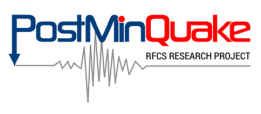Digital Platform of Integrated Data (DPID)
In most coal mines in Europe, exploitation has already been ended and the regions of previous exploitation in geological strata are completely flooded. Other mines are only partially flooded because of the proximity to the mines that are still in the operation. Their mining activity requires drainage of the rock mass and maintaining the underground water level at a certain depth. Maintaining of water level depth is also required in those closed mines where the hazard of surface deformation or other negative environmental impact is high. The process of flooding the mine is lengthy. During this process, there is a slow movement of the re-saturating the rock mass water table towards the ground surface. The water initiates movement of rock blocks within geological strata and redistribution of a local gravity field. It creates stress in rock mass and changes the geodynamics of the region. The redistribution of stress during the flooding of mines and change in the properties of rocks may cause the reactivation of motion faults and reactivation of shallow mine workings and caved zones. These processes may lead to seismic activities in specific areas, large-scale movements of land (subsidence, upheaval) and the formation of sinkholes in the near-surface zone.
For understanding and investigating the interdependence of various factors affecting the safety of using post-mining regions by scientists, students and others, project contractors provide the data from the ground, underground and satellite measurements collected from their test sites as a digital platform. The platform is a data base sharing digital data from structural geology, mining, seismology, geodesy, remote sensing, gravity and hydrogeology.

